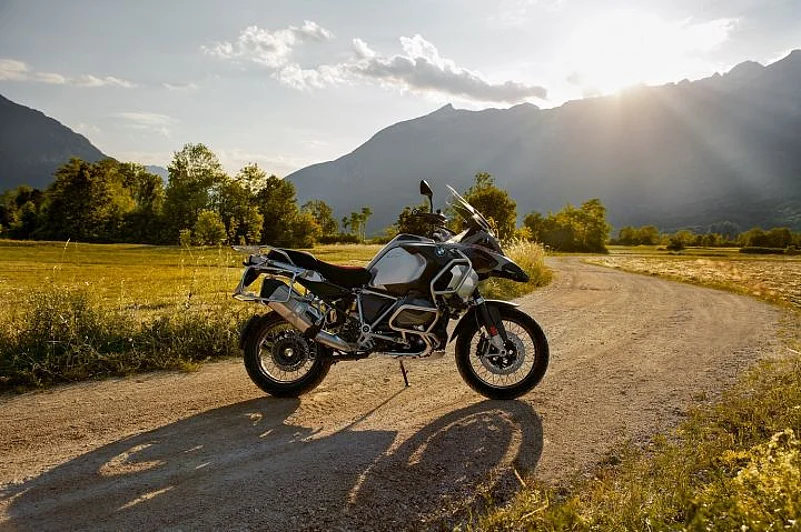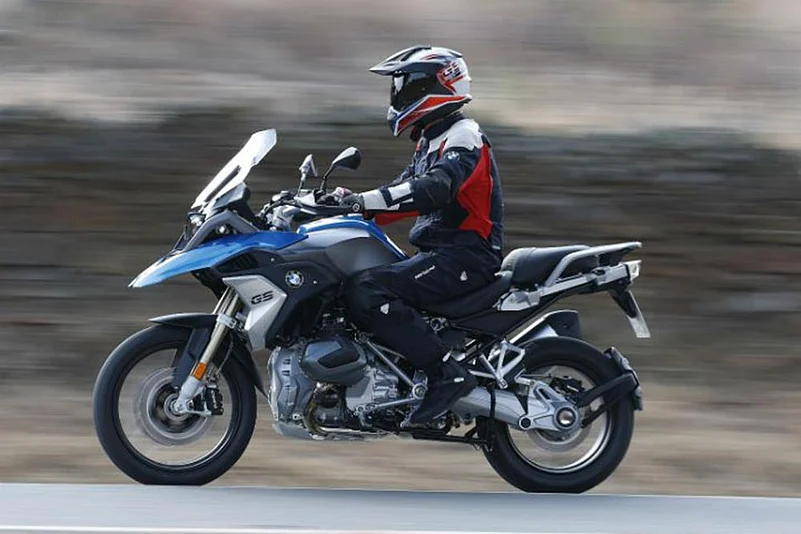The GS range from BMW Motorrad is well-known among ADV and off-road enthusiasts for its legendary terrain-taming capability. Recently, BMW Motorrad launched the R 1250 GS in the country at a starting price of Rs 16.85 lakh, ex-showroom India. Is it just a mild update or is it really a step-up from the previous-gen GS? Here’s all you need to know about the new range:
Carries the quintessential GS styling:

The BMW R 1250 GS and its previous-gen iteration, the R 1200 GS, both look almost identical design-wise except for the engine head covers and the exhaust headers. That’s because the motor now comes with new ShiftCam technology, which will be explained in the forthcoming paragraphs. The new motorcycle retains the iconic asymmetric headlamp design but is a new LED unit. It is flanked by knuckle guards on both sides and a large adjustable windshield up top. You get a power socket and an optional 6.5-inch full-colour TFT instrument console with smartphone connectivity.

While the standard variant gets a large 20-litre fuel tank, the Adventure version comes with an even bigger 30-litre aluminium unit! This variant also gets a beefier front beak and tank side panels with brushed metal elements, a full-length crash guard, TFT console, higher seat and a slightly longer luggage rack at the rear. Apart from these features, it also rolls on wire spoke wheels with tubeless tyres.
Debuts with ShiftCam technology:

Compared to the older-gen model, the new R 1250 GS draws power from a slightly bigger 1254cc air- and oil-cooled twin-cylinder DOHC boxer engine. In a first for BMW, the motor comes with ShiftCam technology. This feature essentially optimises refinement, especially at the lower end of the rev range, and efficiency as well. ShiftCam varies the valve timings, and the camshafts are designed for optimal fuel flow, thereby resulting in better combustion efficiency. The motor also gets an optimised oil supply, twin-jet injection valves and a new exhaust system.

All these changes result in a peak power output of 135.9PS at 7750rpm and 143Nm at 6250rpm. The power is sent through a 6-speed transmission, linked to a shaft drive. As per the WMTC cycle, the claimed efficiency figure stands at 21.2kmpl, which isn’t too bad for a motor this large. This combined with the 20-litre fuel tank in the standard version will ensure over 400km of range, while the R 1250 GS Adventure’s range exceeds 600km, theoretically at least.
Standard electronic features in both the variants include Rain and Road riding modes, disengageable ABS, Automatic Stability Control and Hill Start Control.
Packs capable underpinnings:

The BMW R 1250 GS and the BMW R 1250 GS Adventure are built on a two-section frame with the engine as a stressed member, and a bolt-on subframe. Suspension consists of a 37mm BMW Telelever central spring strut up front and a BMW Paralever at the rear, fully adjustable hydraulically. Suspension travel stands at 190mm up front and 200mm at the rear for the standard version. On the other hand, the Adventure variant gets a slightly higher 210mm suspension travel on both ends. Both bikes roll on 19-inch front and 17-inch rear wheels but the standard variant comes with alloys while the Adventure gets cross-spoked wheels which can accommodate tubeless tyres.

For stopping power, these behemoths use twin 305mm discs with radial calipers at the front, and a single 276mm disc at the rear. In the normal version the seat is 850mm high while the Adventure’s seat is 889mm above ground. When it comes to the heft, the standard bike tips the scales at 249kg kerb and the Adventure weighs a mammoth 268kg. This is thanks to the bigger fuel tank, spoke wheels and crash guard.
Comes at a premium:

BMW Motorrad India is bringing the new GS range to India via the CBU route, and consequently, the bikes are priced on the higher side. The base Standard variant costs Rs 16.85 lakh while the Pro version retails at Rs 20.05 lakh. On the other hand, the Adventure variant starts at Rs 18.25 lakh for the standard model while the Pro comes in at 21.95 lakh, all ex-showroom, India. Compared to their predecessors in their respective specs, the new bikes cost a lakh rupees more, which isn’t too bad considering the level of technical improvements in the powertrain. Chief rivals for this range include the Triumph Tiger 1200 (Rs 17 lakh) and the Ducati Multistrada 1260 range (Rs 15.99 lakh to Rs 21.42 lakh, all ex-showroom India).
Source: zigwheels.com
















